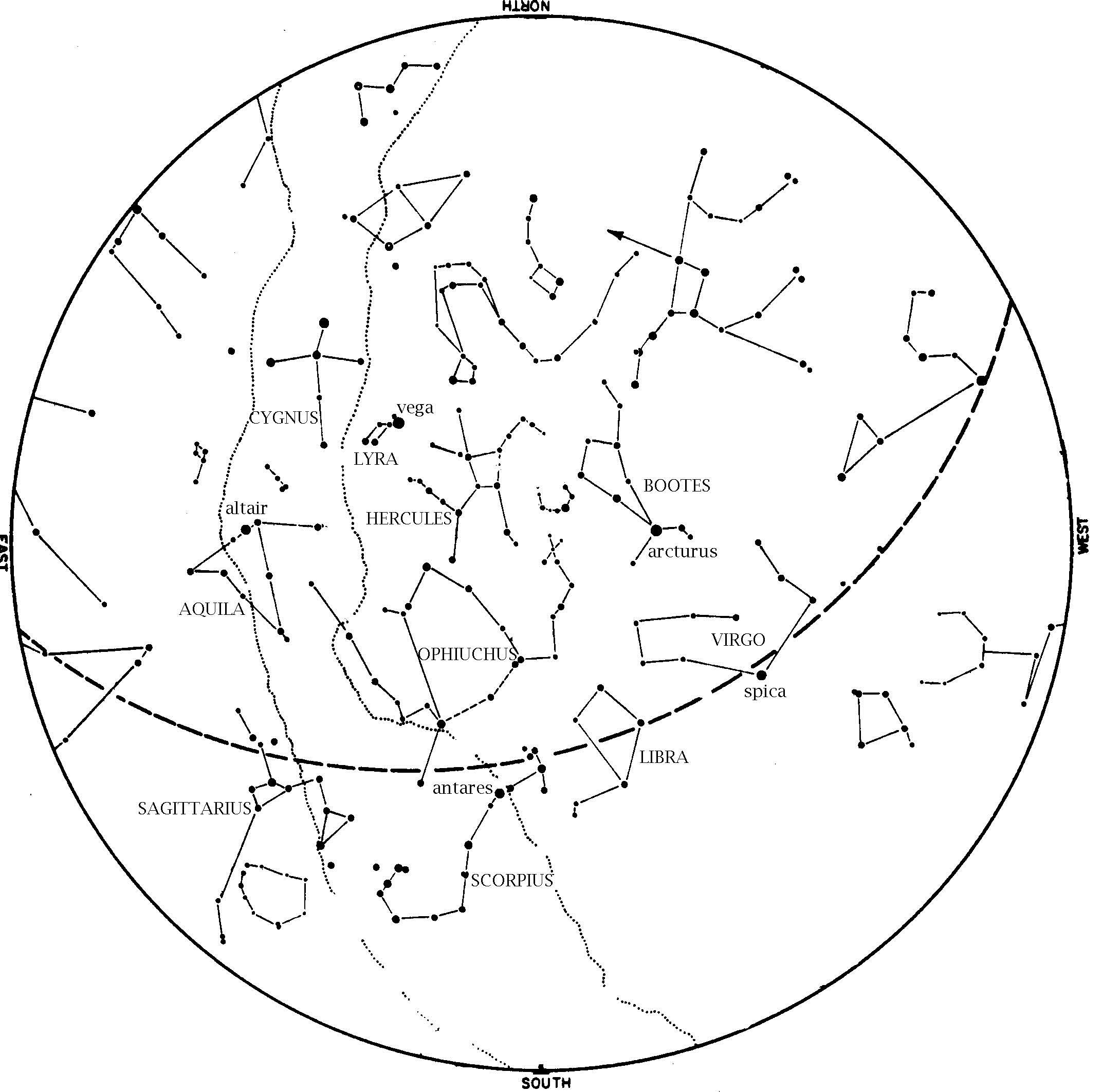
This star map shows the Houston sky at 10 pm CDT on July 1, 9 pm CDT on July 15, and dusk on July 31. To use the map, put the direction you are facing at the bottom.
The Summer Triangle is high in the east. This consists of the brightest stars in Cygnus, Lyra, and Aquila. Scorpius, the Scorpion, is in the south, with the ‘teapot’ of Sagittarius to his left. Leo, the Lion, sets in the west with Jupiter. From the Big Dipper’s handle, ‘arc to Arcturus’ and ‘speed on to Spica’ in the southwest. Mars and Saturn remain in the south at dusk.
Jupiter is now in the west at dusk. It outshines all stars we ever see at night, so you can’t miss it.
Mars and Saturn are now in the south at dusk. As you watch them, Mars is to the right and is much brighter.
Although Mars continues to fade each night as Earth leaves it farther and farther behind, this month Mars still outshines all of the stars and even rivals Jupiter in brightness! By the end of the month, Mars begins to approach Saturn.
Venus is lost in the Sun’s glare and out of sight all month.
The Big Dipper is above the North Star, with its handle pointing up. From that handle, you can ‘arc to Arcturus’ and then ‘speed on to Spica’; those stars are in the west at dusk. Leo, the Lion, is also in the west at dusk.
Antares, brightest star of Scorpius, the Scorpion, is in the south, with the ‘teapot’ of Sagittarius to its left. Saturn is right above Antares. The Summer Triangle has fully risen in the east. The stars of summer are here.

Moon Phases in July 2016:
New July 4, 6:01 a.m.
1st Quarter July 11, 7:52 p.m.
Full July 19, 5:57 p.m.
Last Quarter July 26, 6:00 p.m.
At 11:00 am on Monday, July 4, Earth is at aphelion. This means that on this date Earth is as far from the Sun as it will get this year. But all of us can feel how hot and sticky it is outside now, compared to January, when Earth was at its closest. This is because the Earth’s orbit is almost a circle; the difference between closest and farthest distance from the Sun is small. Indeed, Earth is only 1.6% farther than average from the Sun on July 4. The effect of Earth’s 23.5 degree tilt easily dominates the tiny effect of Earth’s varying distance from the Sun.
Also on July 4, the Juno spacecraft enters Jupiter orbit. For just over a year and a half, Juno will execute 37 orbits of Jupiter before a controlled orbit into Jupiter in February 2018. The spacecraft is designed to explore the inner composition of Jupiter, giving more information about what’s far beneath the cloud layers we see.
On most clear Saturday nights at the George Observatory, you can hear me do live star tours on the observation deck with a green laser pointer. As of now, however, George is closed while Brazos Bend State park dries out from yet another round of floods on the Brazos River. The park could reopen as early as July 12.
Clear Skies!
James G. Wooten
Planetarium Astronomer
Houston Museum of Natural Science





